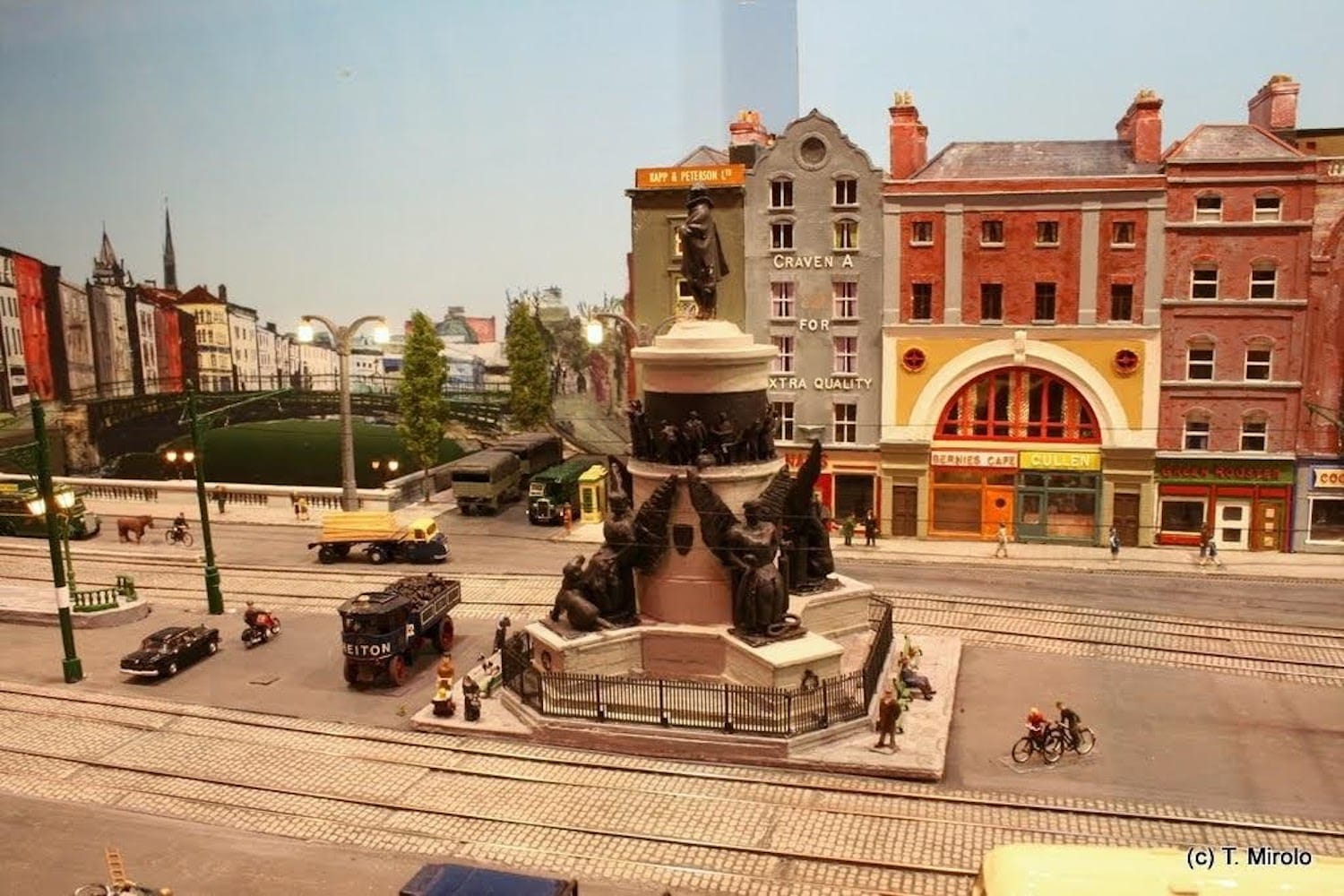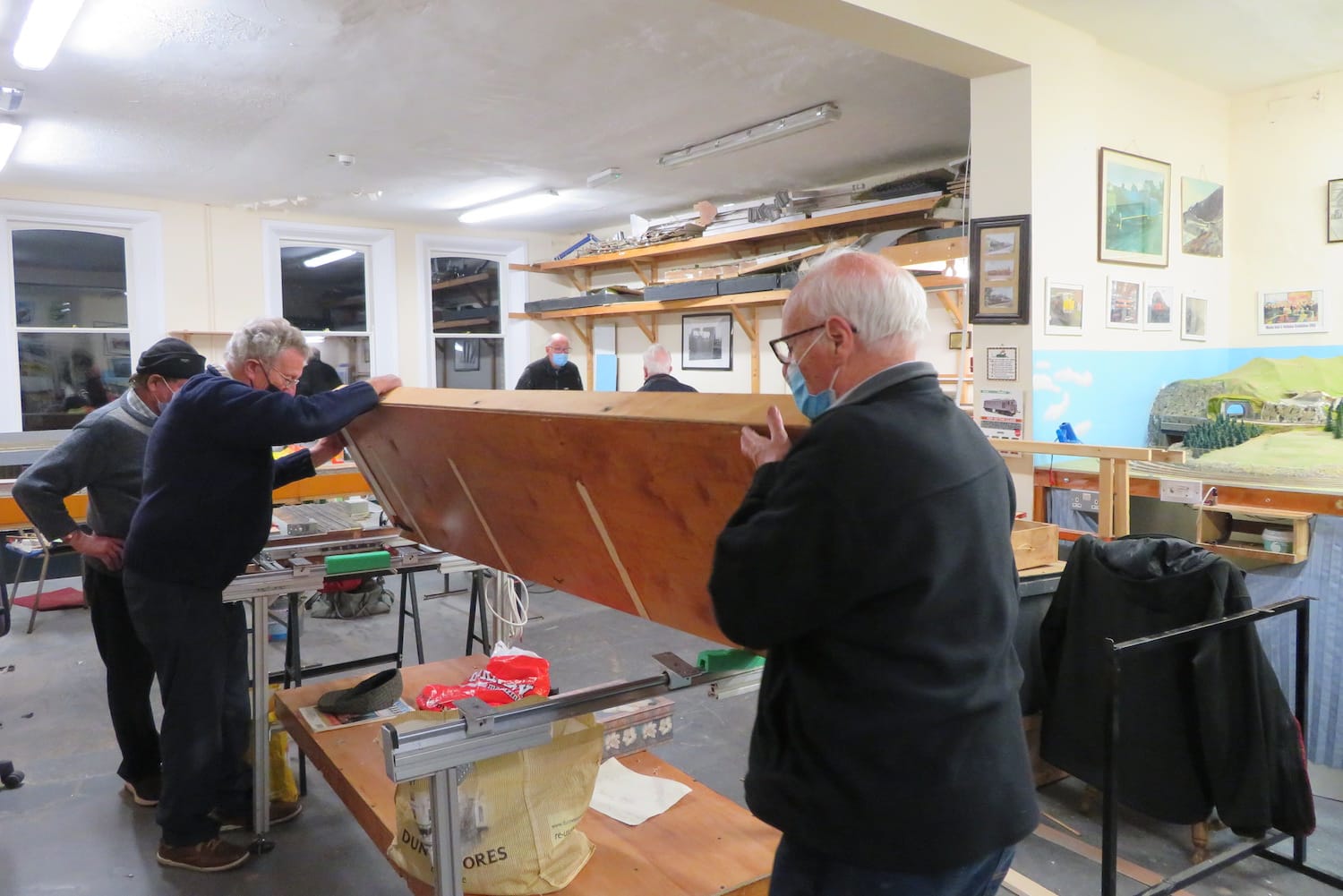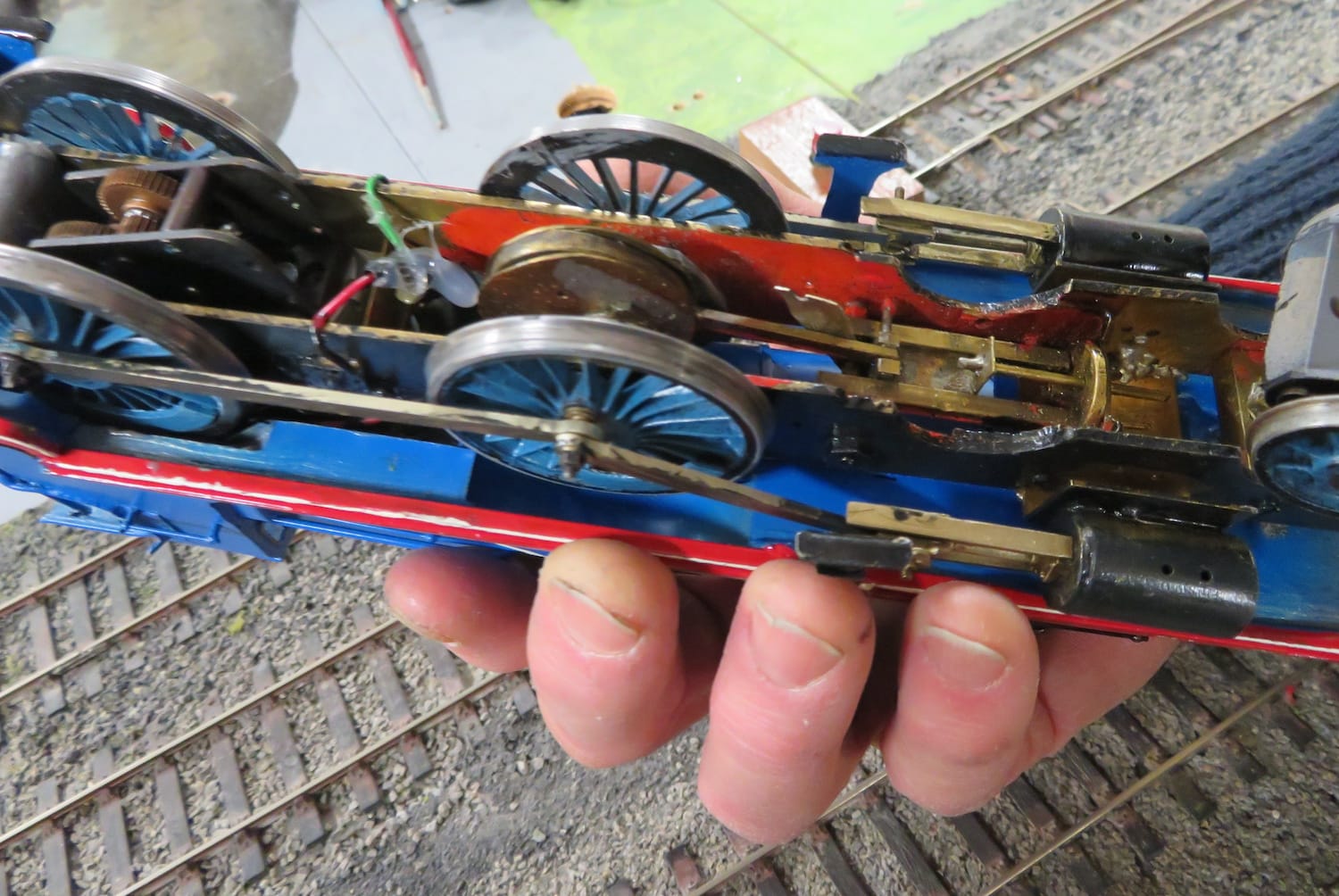What’s the best way to tell area residents about plans for a new asylum shelter nearby?
The government should tell communities directly about plans for new asylum shelters, some activists and politicians say.
The Model Railway Society of Ireland is looking for a new headquarters, as it is set to be displaced by a council plan to build 163 new homes.

Before the Model Railway Society of Ireland set about recreating the O’Connell Street of 1949, the last year the old trams ran through it, they had to make sure they knew exactly how it looked.
It meant painstaking research. Rooting through archives, pulling up old photos and stories and even climbing up on the roof of the GPO.
“We had to get photos of the statues at the top of the GPO,” says the society’s chairman, Tony Mirolo.
“It’s a labour of love,” says Ed Fahey, the society’s secretary.
O’Connell Street sparks feelings of nostalgia for many people. “People can identify with it,” he says. “They say, ‘My grandmother used to work there or my grandmother owned that shop.’”
In their final model, which was 60 feet long, a green and white double-decker tram trundles down O’Connell Street as workmen dig up the road opposite the Carlton Cinema.
The street is quiet, with lines of dark green buses, the odd car and an occasional bicycle. The street lights flicker. The buildings are different colours. The street looks bright and fresh, both familiar and foreign.

Each year thousands of people come to see the society’s models, like this one, which they currently make and house in an old fire station on Dorset Street in the north inner-city.
But the modellers are not sure where they, or their models, will be in the future. The old fire station is going to be wrapped up in Dublin City Council’s plansto build 163 new homes instead of its St Mary’s Place housing complex, and so they are searching for a new home.
They might struggle to find somewhere new. Lots of community groups, clubs and artists across the city say they need spaces.
In the old fire station on Dorset Street, Fahey climbs flights of stairs with ease. It is tougher when carrying up all the materials for the model-train displays, he says.
Upstairs, the shell of a model railway is at the early stages of construction. Dave Bracken, the membership secretary, is preparing tea and biscuits in the nearby kitchen.
Fahey heads up one more flight of stairs, into an attic of cardboard boxes.
The O’Connell Street model is in the boxes, he says. The club doesn’t have space for permanent displays because they want to get on with the work of building new models.
They displayed the O’Connell Street model in lots of places around Ireland and the UK so thousands of people came to see it. Some people in Scotland said they remembered it when it looked like that too, he says.

The Model Railway Society of Ireland was founded not too far away from its current location on Dorset Street, says Fahey.
There was a model railway shop in Phibsborough, called The Model Shop, says Mirolo.
“There was four or five of them that used to meet in the shop,” says Fahey.
One of those who attended on a regular basis was Tony O’Toole and it was he who suggested that Dublin could start a club, says Mirolo.
They got a premises in a basement at 18 Blessington Street, says Mirolo.
One founder, Kevin Thornberry, is still alive and still a member, says Mirolo. He hasn’t been in lately, though, because is almost 90 and so he has to be careful of Covid-19.
Over the years, the society moved around a few locations, always on the north side of the city, says Mirolo, the club chairperson. “Most of us are from the north side of Dublin.”
They have been here on Dorset Street for around 30 years. The only other model railway club in the city is far away in Tallaght, he says.
“You learn skills, you see,” says Fahey. “Like moulding, working with your hands, soldering, painting, scratch building which is basically just, not just buying in the box.”
Until around 10 or 15 years ago, they had to make all the Irish trains from scratch, because they weren’t available to buy, he says.
The release of Irish trains brought a new group of enthusiasts, says Mirolo, a real renaissance of interest.
The Irish tracks have to be built from scratch too, he says, because they are wider than most other train tracks.

Each October bank holiday weekend, the model railway society put the models on display at St Paul’s College in Raheny, says Mirolo. They invite other model railway societies in Ireland to come too.
Around 3,000 people come to see them each year, he says, among them model railway enthusiasts, families and grandparents, who often like to bring their grandchildren.
“We use the shows to keep the club going,” says Mirolo. Takings go towards buying materials, and paying heat and light bills, he says.
There are around 80 members and the club is also an important social outlet for them, says Fah e y, especially for those who live alone.
They meet every Wednesday and Friday. “Some people love the atmosphere,” he says, still standing on the wooden floor of the attic, surrounded by boxes full of model railways.
Before Covid-19, they used to have social events twice a year and travel together to shows in the UK, says Mirolo.
“We have one young lad who is autistic and his dad brings him down,” says Mirolo. “He loves it. It’s really important to him.”
“All members are welcome,” he says. Under-16s can come but need to be supervised by a parent or guardian.
A spokesperson for Dublin City Council says that the other two clubs based in the old fire station – Saint Saviours Olympic Boxing Academy and Saint Saviours Karate Club – are likely to have space in the council’s new development.
But Mirolo says he fears the model railway club will struggle to find a new space. “Property is at a premium.”
They need a big space as they work on several tracks at once, he says, and as it is they cannot display their finished works. The O’Connell Street mock-up is sitting in boxes.
Says Mirolo: “We are kind of hoping that Dublin City Council will find something for us.”
The council spokesperson says the council is trying to find the club a spot and they’ve been talking to the group about what they need. Dublin City Council is “actively exploring avenues in this regard”, they said.
Downstairs from the attic, through the kitchen, work is beginning on a Continental railway track, which Mirolo says will be modelled on those in Germany.
Across the hall, in a large room, 11 men are working building models or playing with the trains.
“Look at this,” says Fahey. It is the railway station from the 1952 film The Quiet Man, starring John Wayne and Maureen O’Hara, set in Mayo. Stone walls surround a little white cottage and the railway line runs through the scene.
Technology is constantly evolving, says Bracken, the membership secretary. They will use a 3D printer to make a figurine of John Wayne, one that is exactly the right size for the model.
They’re currently working on building the village of Cong in Co. Mayo, complete with the iconic pub, he says.
That should be finished in the next few months, he says. Plenty of time to perfect the details before it goes on display in Raheny next October.
The idea came to one of the members when he was sitting watching the film, says Mirolo. “The first thing he does is ride in on the train.”

Get our latest headlines in one of them, and recommendations for things to do in Dublin in the other.